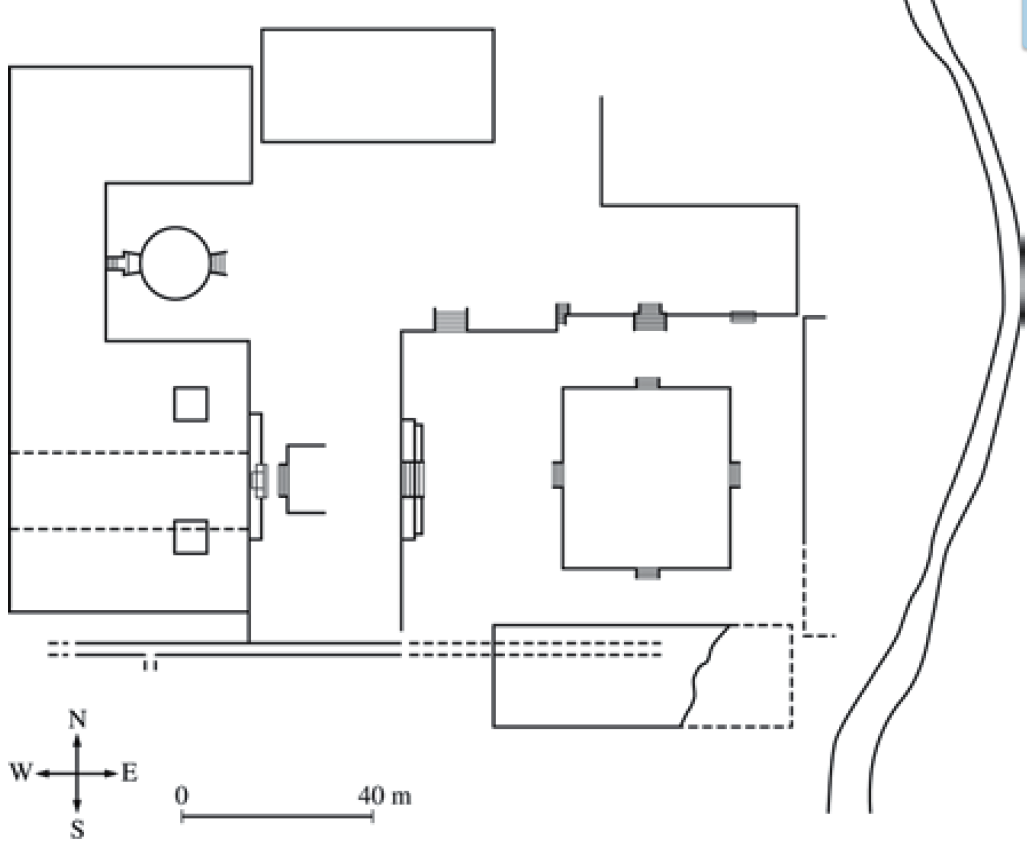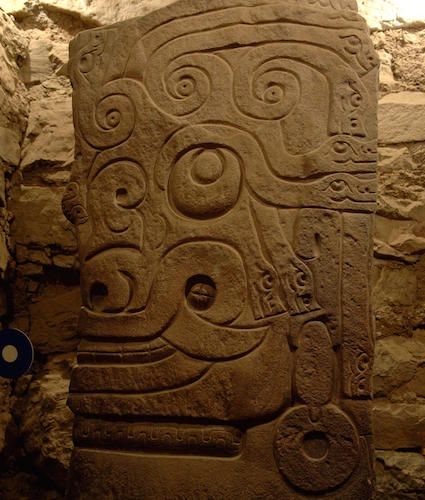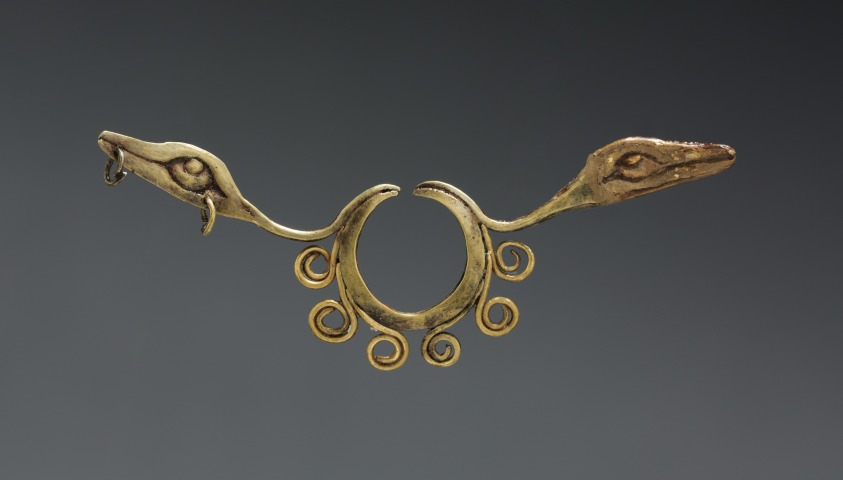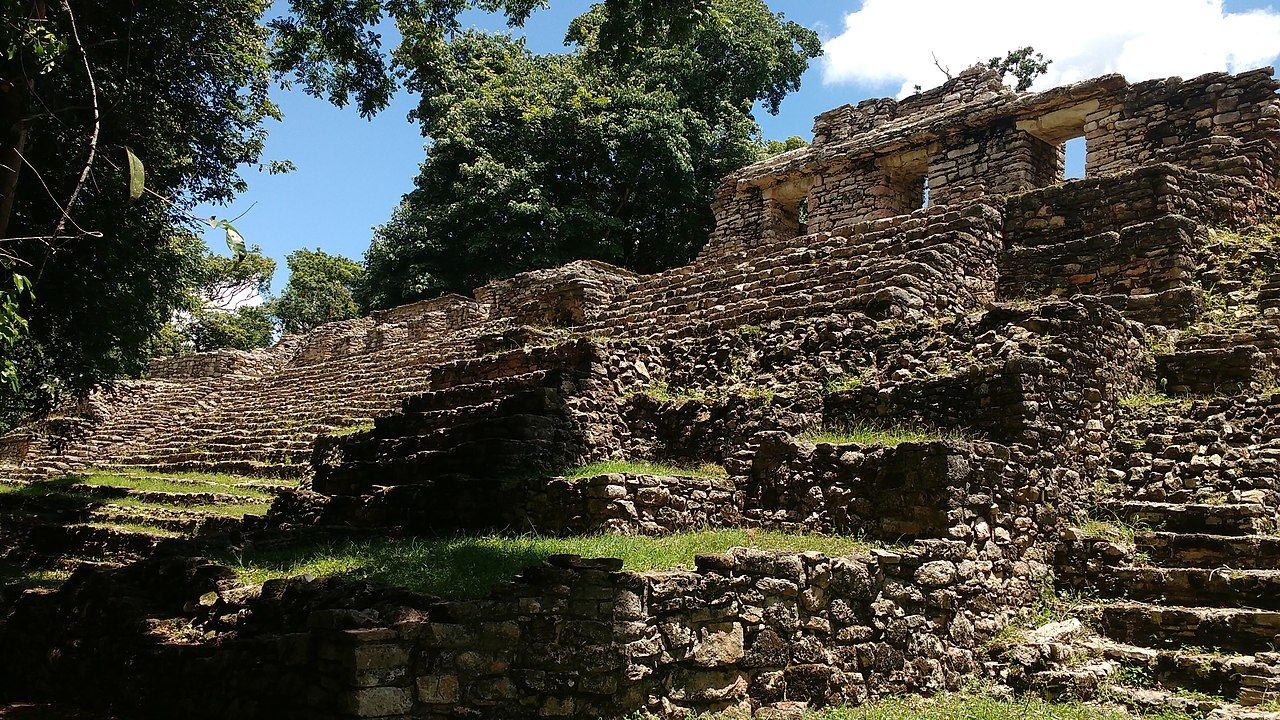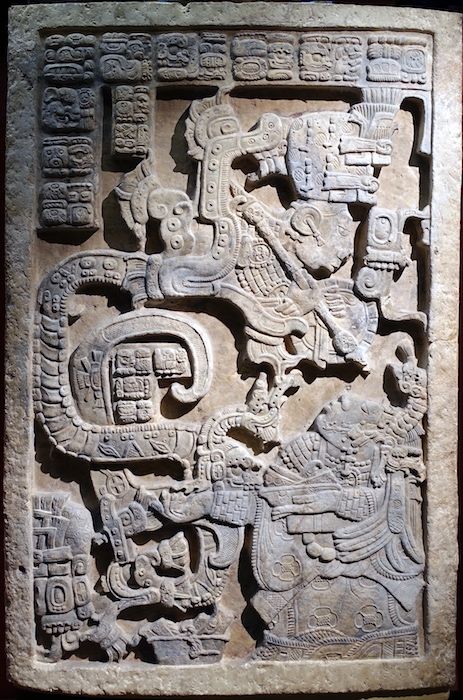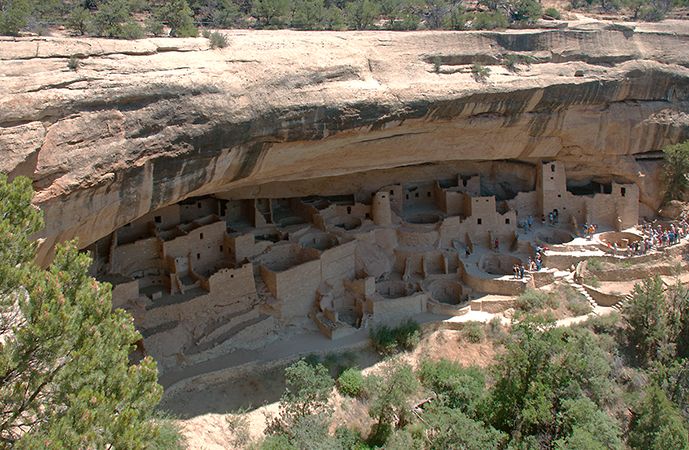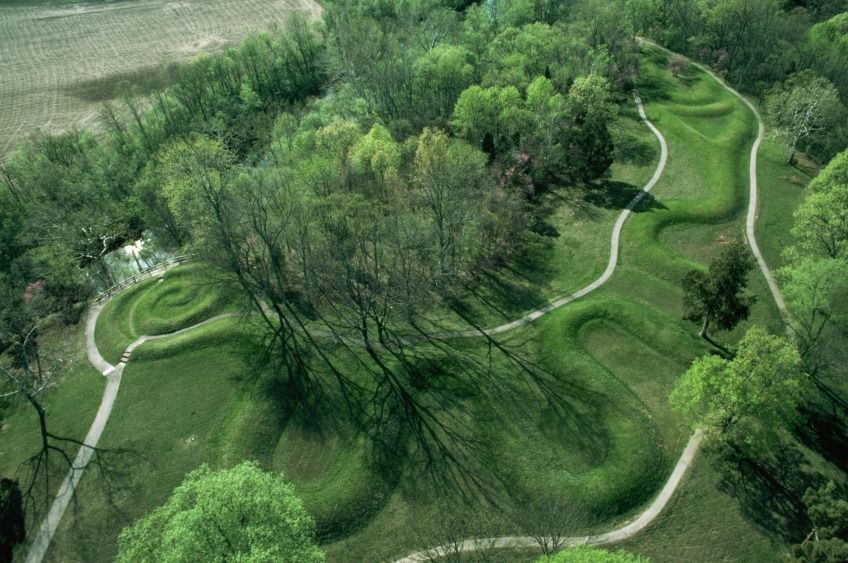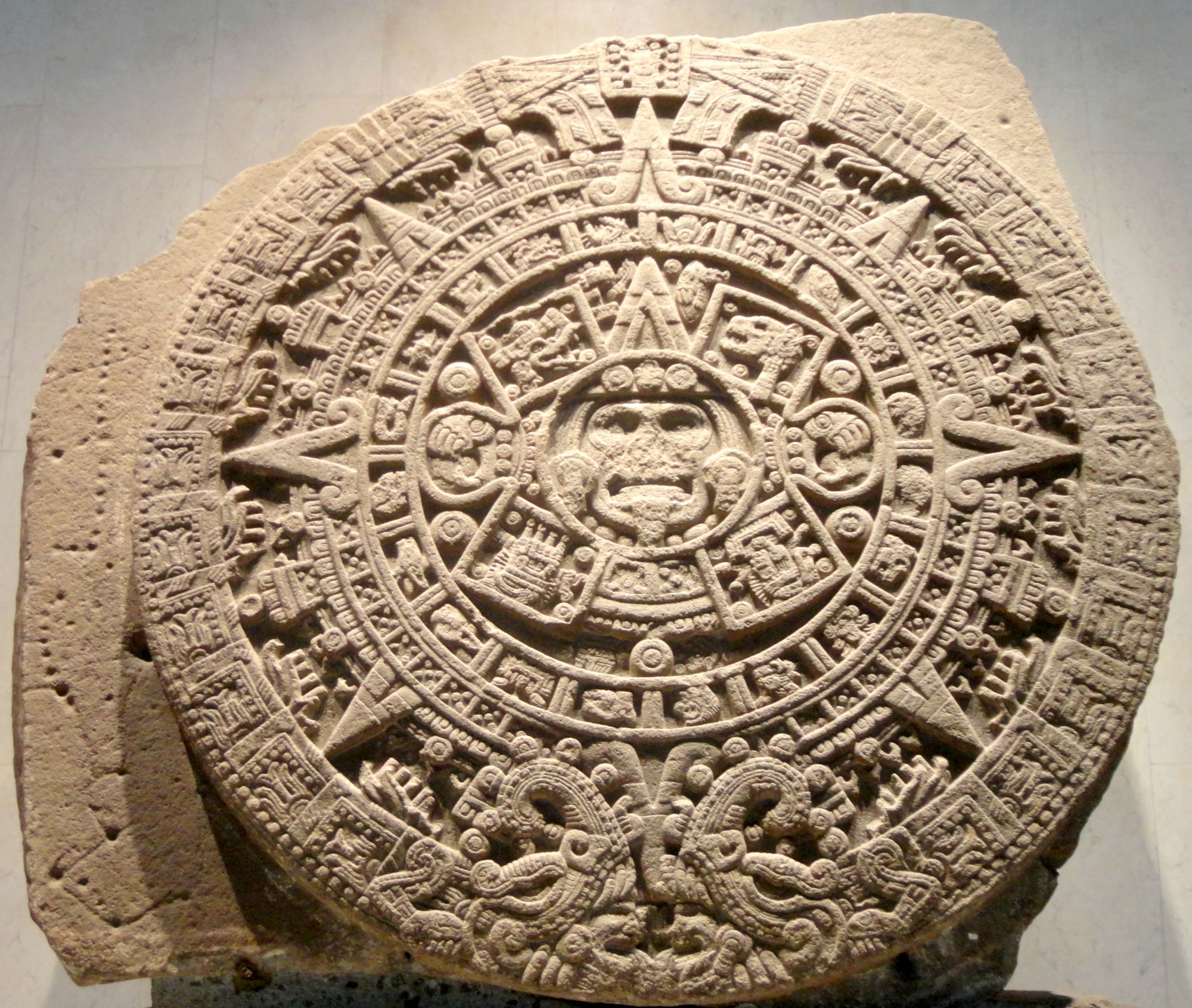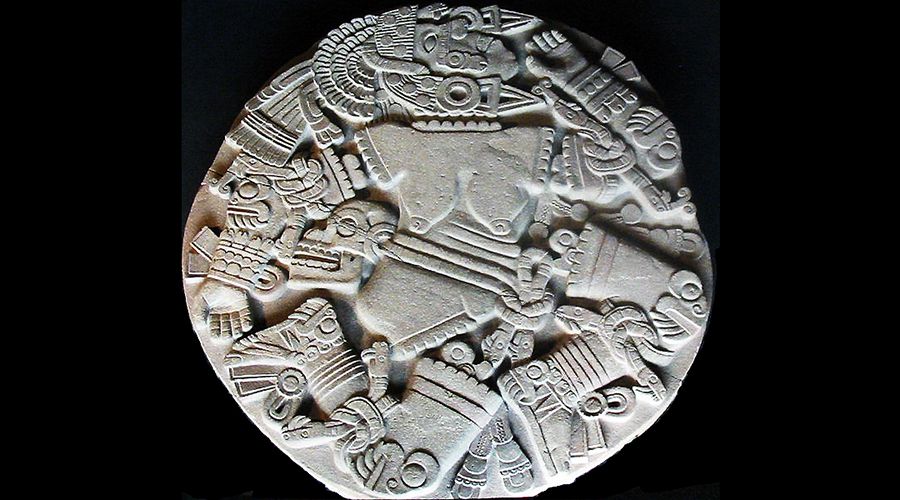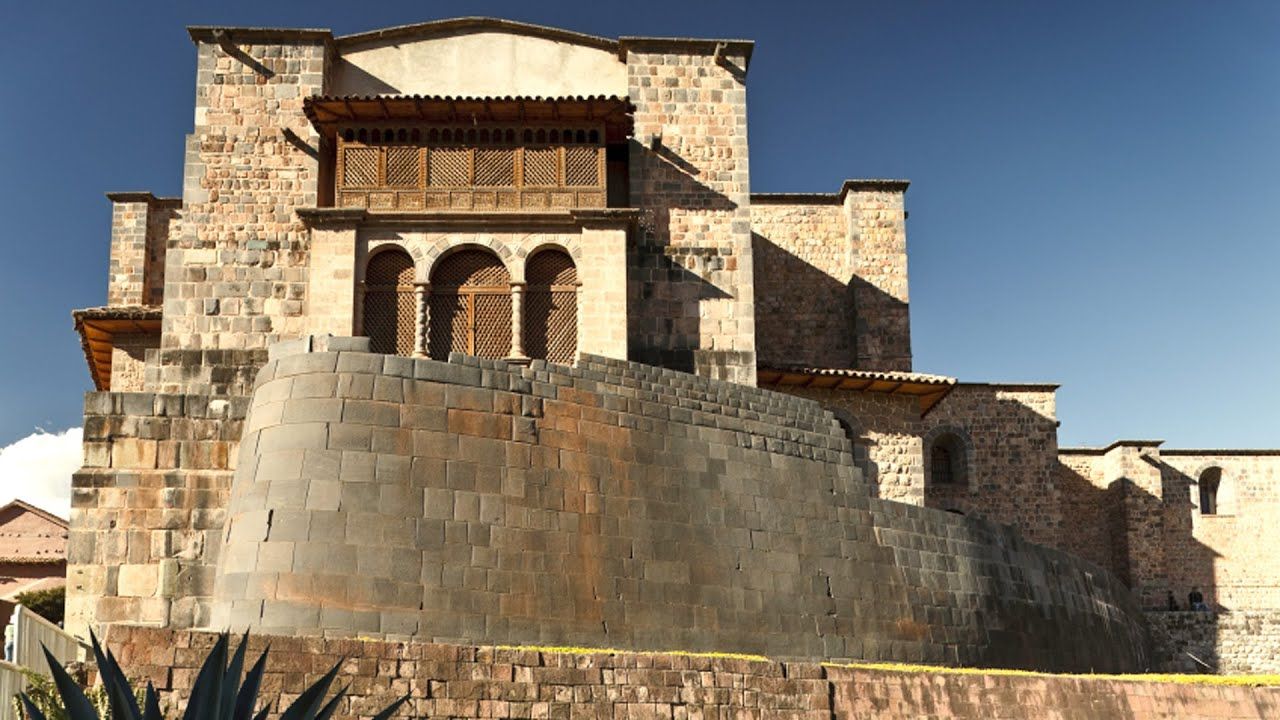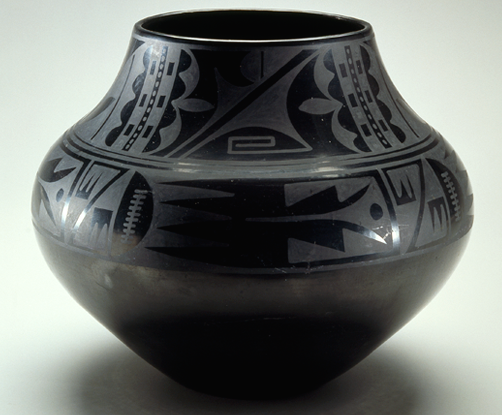Because of the mountainous terrain of Chavín ⛰️, which was located in the Andes, many of its architecture was built in elevated areas. It is common for buildings from this civilization to be built around a u-shaped plan with a plaza (meeting space) in the center and face a large, open part of nature, but it isn't known whether this was for aesthetic purposes or not 🤷 Most buildings are also aligned with either cardinal directions or a nearby river, which shows the importance of water to the people that once lived in Chavín. The region's ideal location in an Andean valley, rather than on a mountain top, and near both the Huachecsa and Mosna Rivers, allowed for easy travel for its people and outsiders 🚶
Pictured below is Chavín de Huántar, which acted as the capital of Chavín's religious cult and is now located in present-day Peru.
Can you find some common characteristics of Chavín architecture in this work?
Image Courtesy of Wikipedia (CC BY-SA 3.0). Chavín de Huántar
Image Courtesy of Pinterest. Plan of Chavín de Huántar
The majority of Chavín sculptures combined both human and animal forms or were
zoomorphic (animal-like 🐍) in appearance but worn by humans, as you can see in the works below. This is similar to many works from
unit 1, where artists combined both animal and human
motifs (features or designs) to emphasize their relationship with one another and importance in each other's lives ( ⬅️ good example of a cross-unit and cross-geographical connection). Most sculptures from Chavín also have left-right symmetry.
Image Courtesy of Khan Academy. Lanzón Stone (one side of the carving)
Image Courtesy of the Cleveland Museum of Art. Nose ornament
Describe the relationship between animals and humans in both of these works. (Don't look anything up; just use your art historian skills to find visual clues.)
The Mayans were well-known for constructing pyramids and temples, which were usually built near one another in plazas like the one we saw in Chavín or on top of one another. These buildings were built using the corbelled vaulting technique, which means that arch-like structures were placed in a space like an entryway to support the roof. They were especially important in the construction of Mayan buildings because many of them have roof combs (a structure placed on top of a temple-pyramid), which gave them both added height 📏 and weight 🏋️ Although they made the construction process more difficult 🤯, roof combs were important to Mayan architects because they accentuated the verticality of their buildings.
Image Courtesy of Wikipedia (CC BY-SA 4.0). Structure 33 at Yaxchilán
Many Mayan sculptures picture humans, which are depicted with protruding brow bones, full lips 👄, and crossed eyes 👀 ( ⬅️ this completely contradicts European standards of beauty from previous units). The majority of these humans are well-respected figures (gods and goddesses, historical people, etc.) and are pictured in different events to tell a story 📖 to the work's viewer (narrative art). As you can see below, the Mayans were particularly fond of relief sculpture (sculpture that is still attached to its media, rather than carved away) and used the technique almost exclusively when making sculptures.
Image Courtesy of Khan Academy. Lintel 25, Structure 23
How do the beauty standards pictured in Lintel 25, Structure 23 contradict with those we've seen in units 2-4 (ex. Greece, Renaissance Italy, Roman verism, etc)?
The Anasazi were know for their pueblos (adobe homes that are stacked onto one another), of which the Mesa Verde cliff dwellings are the most well-known example. As their name suggests, these pueblos were built into the side of a cliff, similarly to Petra and the Bamiyan Buddhas in u[nit 7](Link to published Unit 7 guide). In front of the homes 🏠 is a plaza, where their inhabitants would gathe, and, possibly, complete daily tasks together and have religious ceremonies. Because they were built beneath cliffs, the residents of the Mesa Verde cliff dwellings had to farm 🌽 and gather water🚰 on the plateau above and bring it down to their community (that's kind of inconvenient 😉 ).
Image Courtesy of Khan Academy. Mesa Verde Cliff Dwellings
Unlike its name suggests, the Mississippian culture didn't originate in the state of Mississippi, but instead, a large section of the midwest, southern, and eastern United States near the Mississippi River. The people of the easternmost part were Mound-Builders (people who built mounds for various reasons, including religion and ceremonies) and sometimes made them into shapes. There are many theories as to what is pictured in the mound below, but the most popular theories are that it is a snake of some sort (most likely a rattlesnake) 🐍, or a representation of Halley's Comet ☄️
Image Courtesy of the National Library of Medici. Great Serpent Mound
The single greatest influence on Aztec artwork, both sculpture and architecture, its polytheistic (more than one god or goddess) religion. Aztec religion has a reputation for being aggressive and violent 😡, which is why most of the works from this civilization have to do with ceremonies such as blood-letting and routine human sacrifices. Most sculptures depict a mythological story that has to do with the previously mentioned topics, and were used in those rituals. For example, the Coyolxauhqui Stone (pictured below ⬇️) depicts a human sacrifice and was placed at the bottom of a pyramid where these sacrifices were done.
Image Courtesy of Wikipedia (CC BY-SA 4.0). The Calendar Stone
Image Courtesy of Wikipedia. The Coyolxauhqui Stone
The Inca built their capital city, Cusco, using the ashlar masonry technique (similarly-shaped stones connected together with mortar), which shows their architectural 🏢 skill. Usually, the edges of the rocks are slightly curved and do not 🚫 form a straight line, emphasizing the trapezoidal shape of Incan buildings. Although many of these cultures are distinct, a common theme throughout all indigenous American architecture is pyramid and trapezoid-shaped buildings. It isn't known whether the Inca did this for aesthetic or religious purposes like the Aztec and Maya did.
Image Courtesy of Viator Travel on Youtube.
The media (materials) used and appearance of Native North American art varies greatly by region, which include the Arctic ❄️, Pacific Northwest 🌲, Southwest 🏜️, Plains 🌾, and Eastern Woodlands 🌳. When European explorers came to these regions and introduced them to their artistic traditions, Native American artists began to use new European mediums such as beads and brighter pigments 🎨 in their previously traditional artworks. Eventually, European settlers and tourists to reservations gained interest in Native American art and became the main market for selling these works, like the Black-on-Black Ceramic Vessel pictured below.
Image Courtesy of Khan Academy. Transformation Mask
Image Courtesy of Khan Academy. Black-on-Black Ceramic Vessel
And that's it for unit 5! Hopefully, this review helped you prepare for your class and the AP Art History exam. Happy studying, art historians 🎨!
| Art | Location | Form | Date |
| Chavín de Huántar | Chavín de Huántar District, Peru | Granite | 900-200 BCE |
| Yaxchilán Lintel 25, Structure 23 | Chiapas, Mexico | Limestone | 725 CE |
| Mesa Verde Cliff Dwellings | Montezuma County, Colorado | Sandstone | 450-1300 CE |
| Great Serpent Mound | Adams County, Ohio | Earthwork | c. 1070 CE |
| Templo Mayor | Mexico City, Mexico | Stone | 1375-1520 |
| Ruler's Feather Headdress | Mexico | Feathers and gold | 1428-1520 |
| Maize Cobs | Cusco, Peru | Sheet metal and gold and silver alloys | c. 1400-1533 |
| City of Cusco | Cusco, Peru | Sandstone | c. 1440 |
| Machu Picchu | Cusco Region, Peru | Granite | 1450-1540 |
| All-T'oqapu Tunic | Peru | Camelid fiber and cotton | 1450-1540 |
| Bandolier Bag | Oklahoma, USA | Beads and leather | c. 1850 |
| Transformation Mask | Alert Bay, Canada | Paint, wood, and string | late 19th century |
| Painted Elk Hide (Hide Painting of a Sun Dance) | Wind River Reservation, Wyoming | Elk hide and paint | c. 1890-1900 |
| Black-on-Black Ceramic Vessel | San Ildefonso Pueblo, New Mexico | Ceramic | mid 20th century |
